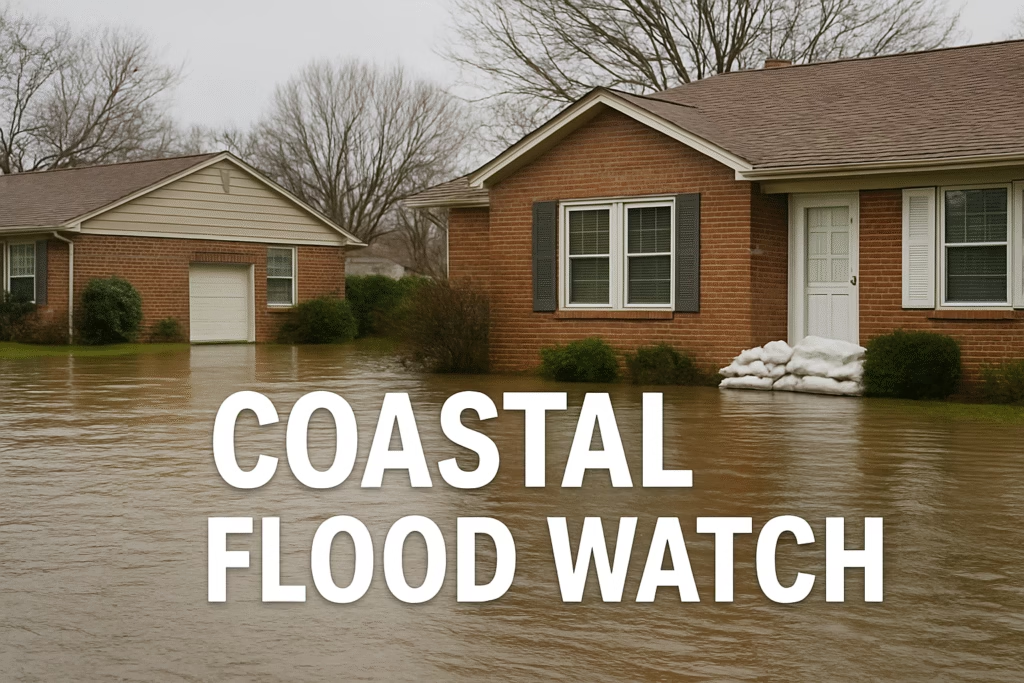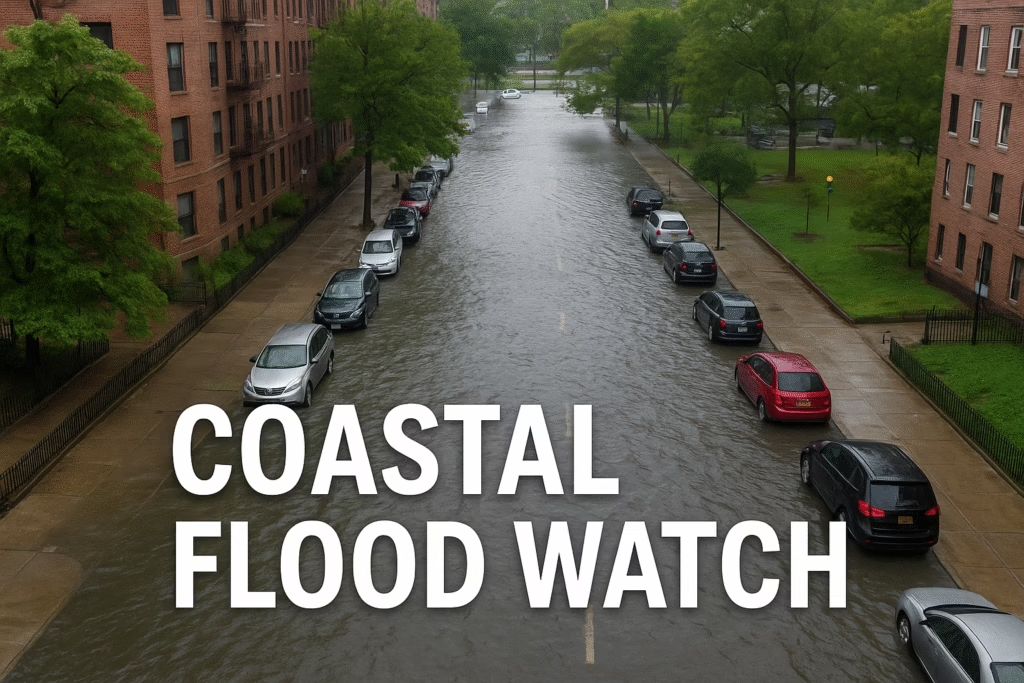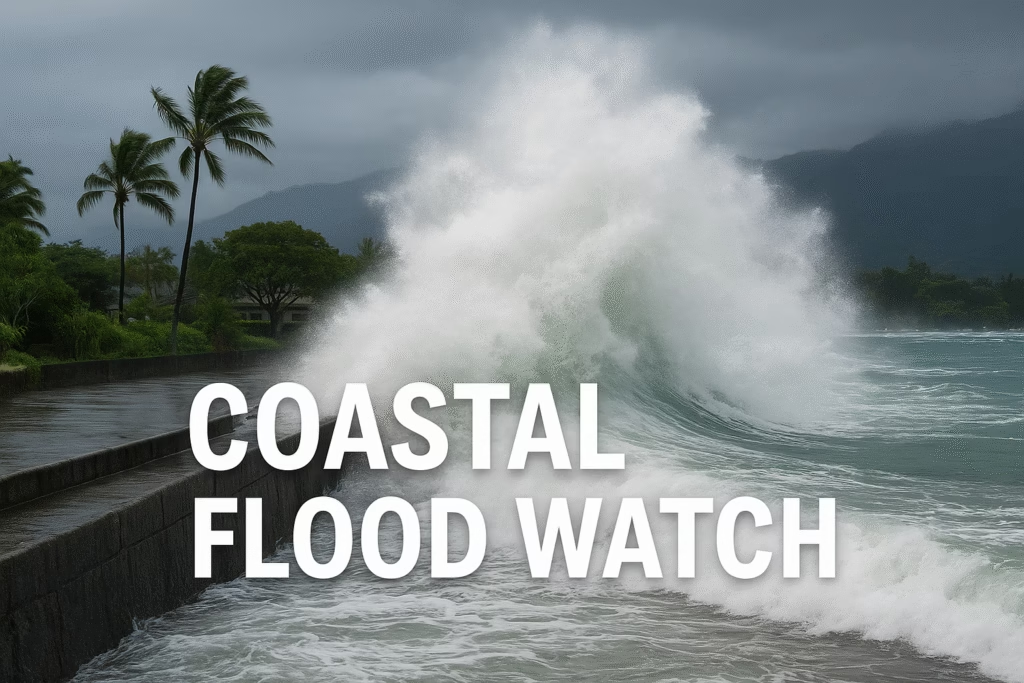
Introduction: The Rising Tide of Worry
Every year, America’s coastal communities brace for the unpredictable power of the ocean. This year, the term coastal flood watch has become one of the most urgent phrases in U.S. weather alerts. From New York to Hawaii, storm surges, king tides, and hurricane remnants have forced forecasters to issue multiple coastal flood watch statements in August 2025. But why does a simple phrase spark such anxiety? Because behind every coastal flood watch lies the potential for homes to be swamped, businesses shuttered, and lives disrupted.
In this blog, we’ll dive deep into the history, urgency, and future implications of the coastal flood system, unpack recent news trends, and explain how individuals and communities can better prepare for what feels like an increasingly common threat.
Table of Contents
History: How Coastal Flood Watch Became America’s Early Warning
The coastal flood watch wasn’t always part of our daily vocabulary. In fact, the U.S. National Weather Service first introduced the term decades ago to distinguish between flooding caused by rainfall and flooding driven by coastal forces such as tides, storm surge, and persistent winds.
Unlike flash flood warnings, which deal with sudden rain-related floods, a coastal flood watch specifically signals the possibility of ocean water intruding onto normally dry land within 12–48 hours. The need for this distinction grew as scientists realized that even modest storms—when aligned with full moon tides—could push seas inland.
In the late 20th century, coastal flood watches were relatively rare. But as sea levels began to creep upward, the number of alerts increased. By the 2020s, thanks to stronger hurricanes and higher baseline seas, coastal flood watch notifications became a seasonal norm. Cities like Miami, New Orleans, New York, and Honolulu all found themselves adapting to a new reality: sunny days could still bring flooding when tides ran abnormally high.
The Significance of Coastal Flood Watch: Beyond Weather Warnings

Why should a coastal flood be taken seriously by the general public? Because neglecting it might have disastrous results.
Financial Risks
When a coastal flood forces road closures and evacuations, tourist-heavy regions, such as the beach districts of Hawaii or the shore towns of New Jersey, might lose millions of dollars in a single weekend. The impact is felt by eateries, seafront stores, and surf rentals.
The stakes are emotional
When homeowners who live close to the ocean hear the term “coastal flood,” they become quite anxious. Storms like Sandy in 2012 and Ian in 2022 still evoke strong emotions. Fears of loss can be rekindled by a simple forecast.
Environmental Risks
Ecological stress is also brought to light by regular coastal floods. Wetlands, beaches, and freshwater aquifers can all be harmed by saltwater flooding. The delicate balance of coastal ecosystems is at stake here, not just real estate.
Recent Trending News: Coastal Flood Watch Across the USA
Hawaii’s Coastal Flood Crisis
In mid-August 2025, Hawai‘i found itself under a prolonged coastal flood‘s, with forecasters warning of unusually high tides and surf pounding vulnerable shorelines (MauiNow report). The National Weather Service cautioned that low-lying roads and beaches could face regular inundation. Local officials urged residents to move vehicles and prepare for repeat flooding cycles during high tide.
New York’s Coastal Flood Advisory
Meanwhile, on the opposite coast, New York faced its own coastal flood advisory for Queens and Nassau County. Streets notorious for flooding during heavy rainfall now also faced risk from tides driven inland by persistent winds. For residents in these boroughs, a coastal flood watch means rearranging commutes, rerouting school buses, and preparing sandbags.
The Hurricane Erin Factor
Hurricane Erin, swirling offshore in August 2025, amplified these alerts. While not making direct landfall, its massive size and powerful winds created conditions warranting multiple coastal flood across the Eastern Seaboard. The Outer Banks in North Carolina, parts of Delaware, and New Jersey shore towns all saw residents scrambling as tides surged and waves topped dunes.
Implications: What Coastal Flood Means for the Future
The frequency of coastal flood alerts carries serious implications for America’s future.
Infrastructure Under Strain
Each coastal flood highlights weaknesses in roads, bridges, and drainage systems. In New York, subway entrances are particularly vulnerable. In Hawaii, beach highways are often submerged. Rebuilding after each event costs billions.
Insurance and Real Estate
As coastal floods increase, insurance premiums in flood-prone zones are skyrocketing. In some cases, insurers have withdrawn entirely, leaving homeowners with few options. Real estate markets in coastal areas are already feeling the pressure.
Climate Change Connection
Perhaps the biggest implication is climate change. Rising seas mean that the same storm that 50 years ago wouldn’t have caused problems now triggers a coastal flood. Projections suggest that by 2050, nuisance flooding could occur 10x more often in cities like Charleston, Boston, and Miami.
A coastal flood is therefore not just a weather event—it’s a flashing red light about our collective future.
Other Matters: Culture, Communication, and Human Behavior
Confusion Over Terms
One major issue is confusion. Many residents struggle to differentiate between coastal flood watch, coastal flood advisory, and coastal flood warning. This confusion can delay action. Authorities are now working on clearer messaging campaigns to help people understand the urgency.
Social Media’s Role
During Hurricane Erin, TikTok and Twitter exploded with real-time videos of waves overtaking roads. These viral clips often serve as informal coastal flood watch alerts, reaching more people than official bulletins.
Human Psychology
Why do some people ignore a coastal flood? Psychologists suggest “alert fatigue.” After hearing so many warnings, some residents stop reacting. That complacency can prove deadly.
Cultural Impact
Communities adapt culturally as well. In Hawaii, residents schedule events around tide charts. In New Jersey, towns prepare seasonal flood festivals—half joke, half resilience. The coastal flood has become part of daily life.
The Role of Climate Change in Alerts
Scientists consistently link the rising frequency of coastal flood advisories to climate change. Warmer ocean temperatures and melting polar ice caps are leading to higher sea levels, which in turn make every high tide and storm more dangerous. This is why communities like New York, Hawaii, and Florida are seeing an increase in coastal flood warnings compared to a few decades ago. Each new event serves as a wake-up call that local governments and individuals must adapt to a future where flooding is no longer a rare emergency but an expected seasonal challenge.
Economic Disruptions Caused by Coastal Floods

The financial consequences of a coastal flood go far beyond property damage. Small businesses in flood-prone neighborhoods often face shutdowns during these alerts, losing vital income. Transportation networks—including subway lines, airports, and highways—are frequently delayed or disrupted, causing ripple effects across the economy. By factoring in the billions of dollars lost annually to these events, policymakers emphasize the urgency of stronger flood defenses and smarter zoning regulations. Ignoring coastal flood watch advisories can no longer be seen as a local issue—it’s a national economic risk.
Preparing the Next Generation for Coastal Flood Resilience
Another aspect often overlooked during coastal flood alerts is the role of education. Schools in coastal areas are beginning to include climate awareness and emergency training in their curriculum. Children learn not just about science and weather patterns but also about practical safety measures during floods. By empowering the next generation with knowledge, society is building long-term resilience. In the years ahead, today’s students will become the decision-makers who implement stronger flood defenses and greener infrastructure to reduce the dangers highlighted by every coastal flood announcement.
Conclusion: Unstoppable Rise
“Coastal flood ” refers to more than just a prediction. Rising sea levels, more powerful storms, and exposed coastlines are all reflections of our times. Americans are adjusting to this new normal everywhere from the beaches of Hawaii to the boroughs of New York.
The question is not if coastal floods will or not occur but how we adapt—through cultural resilience, transparent communication, and infrastructural investment—is the true question.
Keep in mind that the next coastal flood watch alert is more than just a warning when it lights up on your phone. It’s an opportunity to take action, get ready, and safeguard what really counts.,
FAQs
1. What exactly does a coastal flood watch mean?
It means flooding from tides or storm surge is possible within 12–48 hours. It’s an early alert to get prepared.
2. How is a coastal flood watch different from a warning?
- Watch: Flooding is possible.
- Warning: Flooding is happening or imminent.
- Advisory: Minor flooding is expected, usually less dangerous but disruptive.
3. Why are coastal floods increasing?
Because rising sea levels and stronger storms make flooding more likely. Even normal high tides are now amplified by climate change.
4. What should I do during a coastal floods?
Move valuables to higher ground, prepare an evacuation plan, and stay tuned to local alerts. Even if flooding doesn’t happen, you’ll be ready if it does.
For More Such Videos : Keep Reading
Discover more from NewsBusters
Subscribe to get the latest posts sent to your email.

1 thought on ““5 Urgent Truths: Coastal Flood Watch Unleashes Rising Risk””